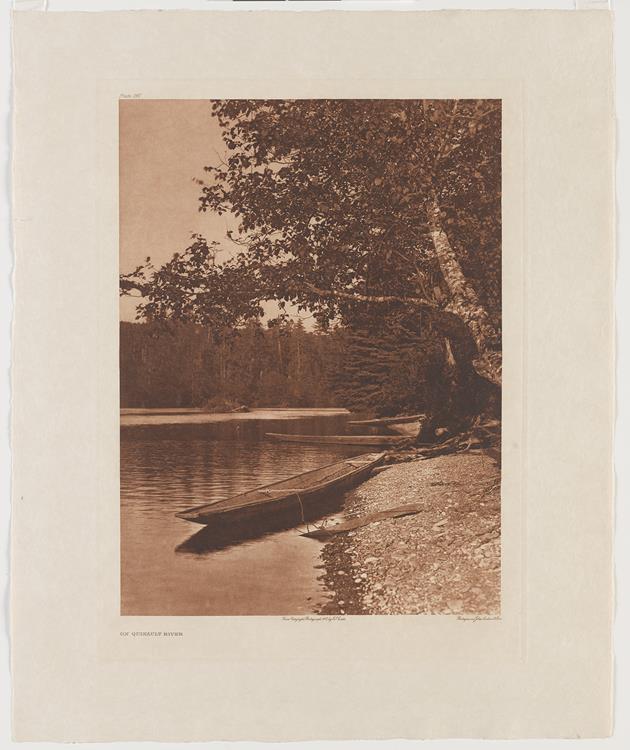On The Quinault River
1912
At the time that Curtis opened his photographic studio in Seattle in the early 1890s, Native peoples all over North America had been disenfranchised from their ancestral lands and moved to reservations. In the northwest, the Potlatch ceremony-gathering for ritual observances whereby oral histories are transmitted and ceremonial dances are taught-had been banned and Native children had been placed in residential boarding schools. An amateur ethnologist, Curtis conceived of the ambitious project to photographically document all remaining Native groups, believing (as many others did) that they would soon become extinct. The empty canoe seems to suggest the absence of Native people who, contrary to Curtis' prediction, played an important role in the labor force-in fishing, forestry, agriculture-and in the war effort.
Photogravure on vellum (paper)
15 1/2 x 11 7/16 in. (39.3 x 29.1 cm)
Gift of John H. Hauberg
86.154
Photo: Elizabeth Mann

